- Home
- Best Pet for Me
- Essentials for Fish Tanks
Essentials for Fish Tanks: What You Need For Your Rescue Fish
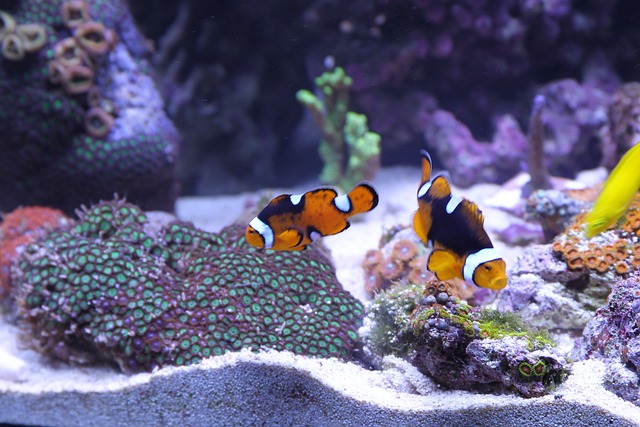 Image by makeitsomarketing from Pixabay
Image by makeitsomarketing from PixabayWhen rescuing fish, they often come with their own tank and basic supplies, but don't assume these will meet all their needs in the long run. While these initial provisions might get them through the first few days or weeks, creating a thriving environment for your new aquatic friends requires thoughtful adjustments and an understanding of the essentials for fish tanks. Each species has specific needs, and by addressing these requirements, you’ll ensure that your rescued fish live a healthy, happy, and long life.
Essentials for fish tanks start with the tank size. Even if your rescued fish come with a setup, it might not be ideal. Different species of fish require different tank sizes, and what might have been acceptable in their previous home could be inadequate for long-term well-being. Many fish species need ample space to swim, explore, and establish territories. If the tank is too small, the fish could experience stress, which can lead to a variety of health problems. Be sure to research the size requirements of your specific fish species and consider upgrading to a larger tank if needed. More space means happier, healthier fish.
Water quality is another critical factor in maintaining a healthy aquarium. Even if the tank comes with a filtration system, it might not be enough to keep the water clean. A high-quality filter is essential for removing debris, food waste, and harmful chemicals from the water, which ensures a clean environment for your fish. Additionally, you’ll want to test the water regularly to monitor ammonia, nitrite, nitrate, and pH levels. Some species are sensitive to fluctuations in water conditions, so consistency is key to their well-being. Investing in a water testing kit will give you the tools to maintain optimal water conditions.
Temperature is another essential element to consider when setting up your fish tank. Many species of fish thrive in specific temperature ranges, and maintaining the right temperature is crucial for their health. Tropical fish, for instance, require a warmer environment, so installing a quality aquarium heater is necessary. Be sure to use an aquarium thermometer to monitor the water temperature regularly. Consistent, appropriate heating will prevent your fish from becoming stressed or ill due to temperature extremes.
Along with temperature and water quality, you’ll want to recreate your fish’s natural habitat as much as possible. This involves adding plants, rocks, and other decorations to the tank to provide hiding places, swimming areas, and stimulation. Live plants not only contribute to the aesthetic beauty of the aquarium, but they also help with water quality by absorbing excess nutrients. However, be sure that the decorations are safe and won't harm the fish. Avoid anything with sharp edges that could injure them.
Substrate, or the material placed at the bottom of the tank, is also an essential element. Fish such as bottom-dwellers need a substrate that they can interact with, whether it's gravel, sand, or a more specialized medium. A nutrient-rich substrate is also important if you plan to have live plants in the tank. Having the right substrate helps maintain a healthy ecosystem in your tank and gives your fish a more comfortable environment.
Lighting is another aspect of tank setup that should not be overlooked. Many fish species, as well as live plants, require specific lighting to thrive. Some fish have natural cycles of day and night that are regulated by light, and plants also need the right amount of light for photosynthesis. LED aquarium lights are a popular option because they can be adjusted for intensity and are energy efficient. Be mindful of how long you leave the lights on each day to avoid stressing the fish.
Lastly, always keep in mind that some fish species are social, while others are solitary and territorial. Research your fish’s social behavior before adding any tank mates. Some species do well in groups, while others might become aggressive if kept with others. Understanding their social needs will help prevent conflict and ensure a peaceful tank environment.
In conclusion, although rescuing fish often means inheriting a tank and its initial setup, creating the ideal environment for your new fish will require some adjustments. From selecting the right tank size to maintaining water quality, temperature, and providing adequate space, each element plays a role in the health and happiness of your fish. By following the essentials for fish tanks, you’ll provide your rescued fish with the optimal conditions for a thriving, vibrant aquarium. This effort ensures not only their well-being but also your enjoyment as you care for and watch them grow.
Glass or Acrylic or Outdoor Ponds: Which One Fits Your Needs?
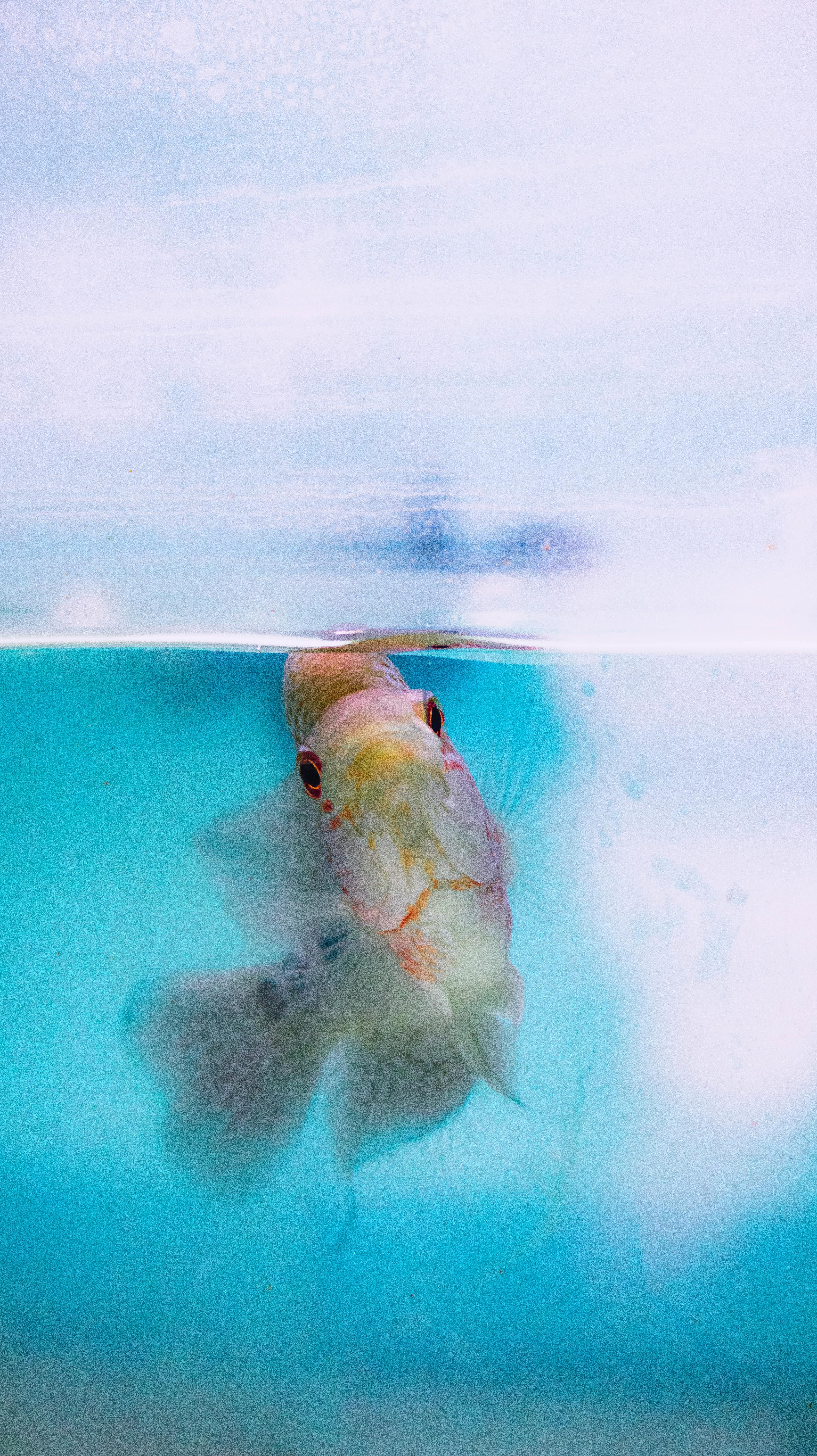 Photo by Nothin Ahead https://www.pexels.com/photo/small-exotic-fish-swimming-in-water-7188174/
Photo by Nothin Ahead https://www.pexels.com/photo/small-exotic-fish-swimming-in-water-7188174/Most fish tanks are made from glass or acrylic. Acrylic tanks are more expensive and lighter weight. They scratch easily, but the scratches can be buffed out. Glass will scratch less, but the scratches are permanent Acrylic tanks might react to chemicals and a chemical stain will not ever come out. Acrylic tanks are clearer than glass but are harder to clean.
Acrylic tanks can come in different shapes, incorporating curves in the design. They can also be seamless, so there is less of a chance of a leak. They hold in heat more than a glass tank. Acrylic tanks will breakdown over time after being exposed to light whereas glass will be more durable in that respect.
There are advantages and disadvantages to both glass and acrylic tanks, so you need to consider all the factors if you are choosing a new tank for your fish.
If you are creating an outdoor pond, you can use prefabricated pond liners of various shapes and sizes, usually made out of High Density Polyethelene. You can also make your own using horse troughs, water sealed barrels, or any number of water tight objects that you can bury in the ground or keep your fish above ground.
Essentials for Fish Tanks: Size Matters
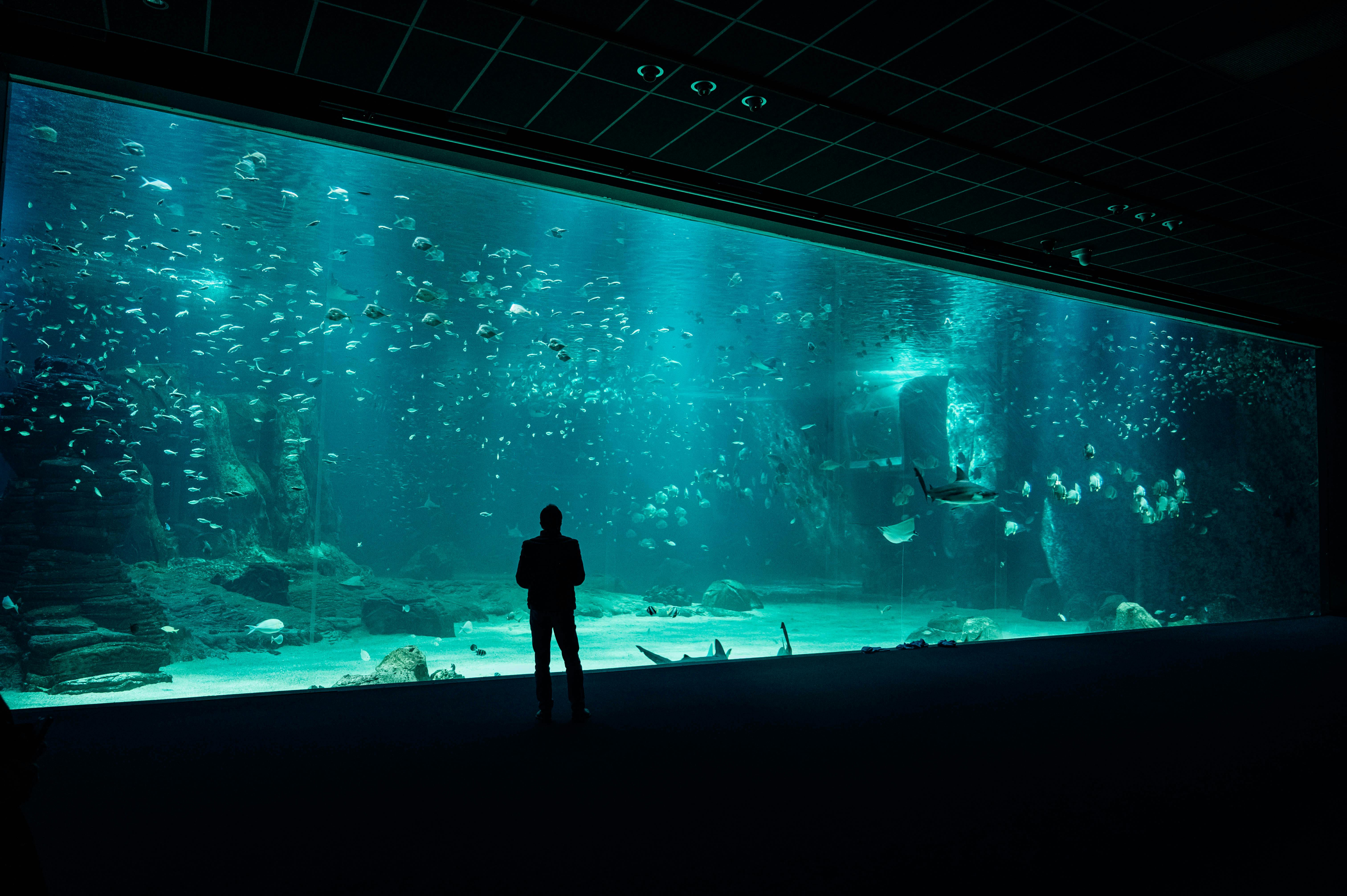 Photo by Lu Zhao: https://www.pexels.com/photo/silhouette-of-a-man-standing-in-front-of-a-huge-tank-in-an-aquarium-10431750/
Photo by Lu Zhao: https://www.pexels.com/photo/silhouette-of-a-man-standing-in-front-of-a-huge-tank-in-an-aquarium-10431750/When it comes to fish tanks, size truly matters. The bigger the tank, the happier and healthier your fish will be. Providing more space for your fish to swim around in gives them room to explore, establish territories, and maintain a healthy lifestyle. A larger tank is not only beneficial for the fish, but it also reduces the amount of maintenance required. With more water volume, the tank has better water quality stability, and the need for frequent cleaning is minimized.
Fish bowls, often seen as cute or convenient, are generally too small for even just one fish. Despite their popularity in some households, they do not offer the necessary space or water conditions to keep fish happy. For example, a goldfish or betta fish needs more room than a tiny bowl can provide. A small tank doesn't give fish enough room to exercise or swim freely, and waste builds up much faster, leading to poor water quality and potentially unhealthy fish.
A larger tank not only creates a more natural environment for your fish, but it also gives you more options for creating a beautiful and diverse habitat. With more space, you can add decorations, live plants, and substrates that contribute to the well-being of your fish. Additionally, it’s easier to regulate water parameters like temperature, pH, and salinity in a larger tank, making it a more stable environment for aquatic life.
Ultimately, the ideal tank size depends on the type and number of fish you plan to keep. While it's tempting to go for a smaller, more manageable setup, fish will thrive in a spacious environment. If possible, opt for the largest tank that can comfortably fit in your living space, and keep only a few fish to maintain balance. Your fish will thank you with their vibrant colors and active behaviors, and you’ll spend less time on maintenance, enjoying the peaceful beauty of your underwater world.
Location. Location, Location
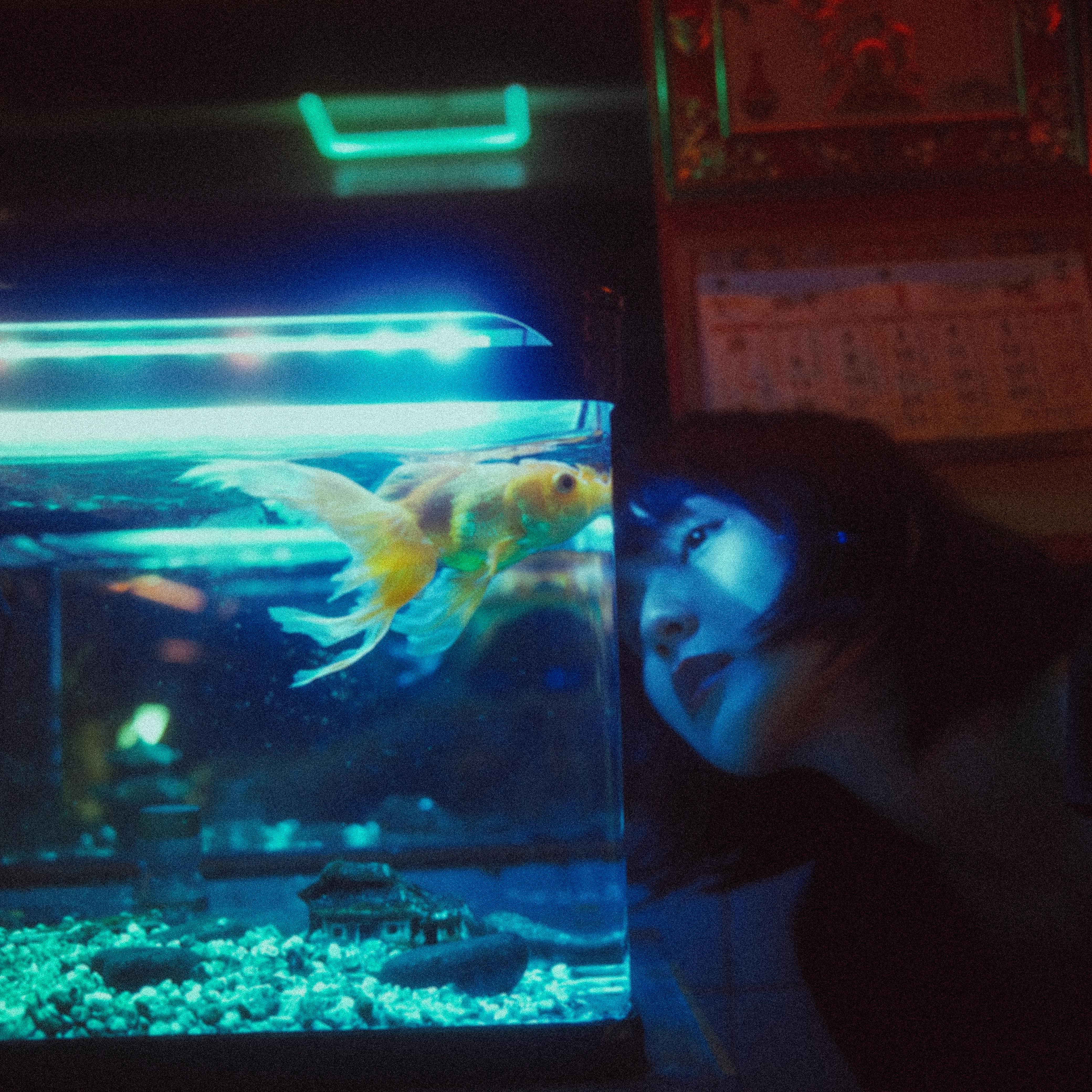 Photo by Khoa Võ: https://www.pexels.com/photo/a-woman-looking-at-a-goldfish-in-a-fish-tank-27922931/
Photo by Khoa Võ: https://www.pexels.com/photo/a-woman-looking-at-a-goldfish-in-a-fish-tank-27922931/Whether your tank is inside or outside, you need to be aware of sunlight. If your tank is in the sun, the temperature change from when the sun is high in the sky or streaming through the windows to when it is night could be too much for your fish. So keep the tank in the shade.
Fish can also get stressed out with too much activity going on around them. Booming sounds and tapping on the tank side can bother them. So think about keeping them in a quiet part of the house.
Make sure that your floor or stand can handle to weight of your fish tank when it is filled with water. If the tank is on a stand, make sure it is very sturdy and won’t tip over.
If your tank is outdoors make sure it is in the shade but not directly under a tree because you’ll be cleaning so many leaves all the time.
Equipment Essentials for Fish Tanks
You’ll need a certain amount of equipment with the tank to keep your fish happy and healthy.
Top
A well-fitting top to the tank prevents heat and water loss. It can also hold lights.
Filter
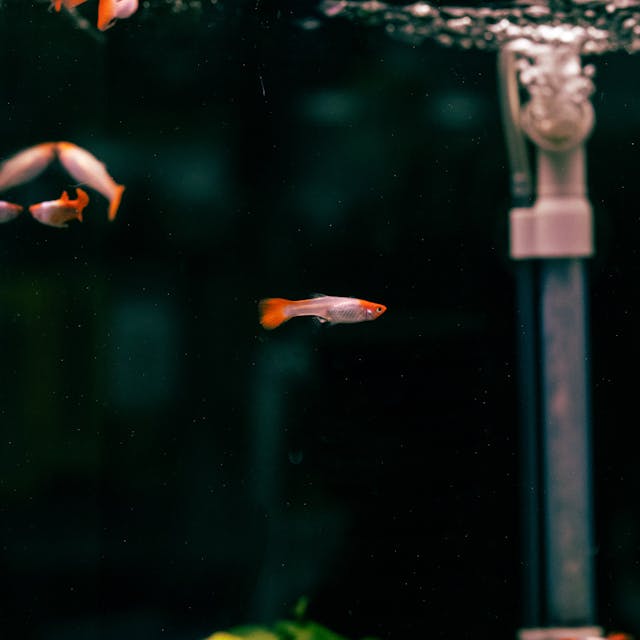 Photo by aboodi vesakaran: https://www.pexels.com/photo/small-fish-in-aquarium-18435511/
Photo by aboodi vesakaran: https://www.pexels.com/photo/small-fish-in-aquarium-18435511/You’ll need a filter for the water, even if you have algae eaters. The filter will help keep down debris. A filter can also encourage the growth of beneficial bacteria that keeps the water chemistry in balance. Some filters use chemicals such as activated carbon to remove impurities in the water. Filters can be totally submerged in the tank, be kept hanging on the side, or be underneath the tank. You’ll need a way to clean the filter, it’s motor, and all the tubes that connect the filter and the motor.
Light
You want to be able to see your fish when you look in the tank and any plants you have growing need light. Most people like neutral white light in their aquariums, but if you are growing coral in a saltwater tank, you might want to have light with a more blueish tint. The light should be intense enough to reach the bottom if you have a large tank and the light should be spread over the whole aquarium. You might want more than one lamp so the whole tank is lit well.
LED lights are usually used because they are long lasting and they don’t emit any extra heat.
Heater
Tropical fish will need the water heated and even some cold-water fish might need some heat if you keep your house cold. Most heaters are submerged and have a thermostat so they won’t overheat.
Substrate
You can line the bottom of the tank with pebbles, sand, or dirt. If you use dirt, you’d need to use a special kind of dirt that won’t make the water muddy. Some aquarium live plants need a certain substrate, so your plants might dictate the kind of substrate you have. You’ll want a substrate vacuum to keep it clean.
Decorations
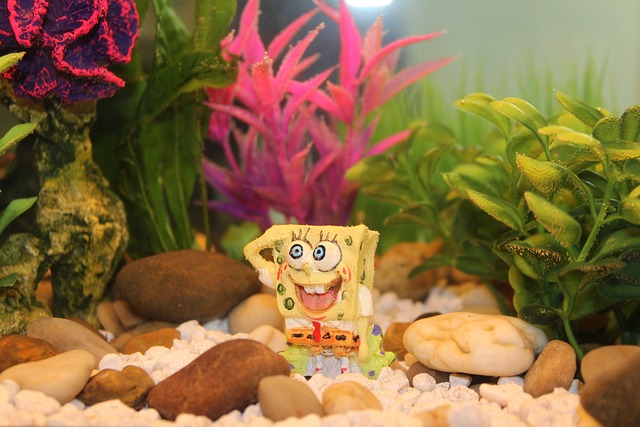 Image by Angie Johnston from Pixabay
Image by Angie Johnston from PixabayA background poster may not be one of the essentials for fish tanks, but it will make your aquarium interesting and unique. There are all kinds of objects you can put in the tank for visual interest and for your fish to swim around in and hide in. When I had a fish tank I had a ceramic skull and pirate-themed decorations. The fish could swim in and out of the skull and even hide in it if they wanted. You could have Sponge Bob, Atlantis, mermaid, or any other decoration theme you want. Pieces of wood and rocks could also be good decorations in a tank.
Always make sure anything you put in the tank is washed first and safe around fish. There should be no sharp edges or points. Also, make sure that anything natural is clean so it doesn’t introduce harmful bacteria or parasites into the tank.
Plants
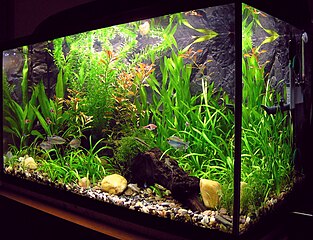 https://commons.wikimedia.org/wiki/File:Amaterske_akvarium.jpg
https://commons.wikimedia.org/wiki/File:Amaterske_akvarium.jpgPlants are both decorative and helpful in your aquarium. They provide perfect hiding places for the fish. They also make oxygen for the fish and help to filter the water. They help to reduce the algae and keep the water chemistry in balance. While they may made cleaning the tank a bit harder, their added beauty and help with creating a great ecosystem for the fish make up for this inconvenience.
You can find many different plants or coral that you can grow in your tank. They will add beauty and health to your tank.
Essentials for Fish Tanks: Setting Up the Perfect Environment
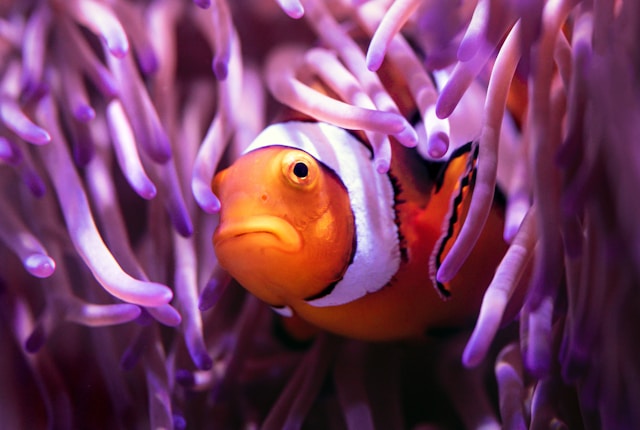 Photo by David Clode on Unsplash
Photo by David Clode on UnsplashWhen you adopt a fish, you might receive a basic tank and supplies, but you may soon realize that upgrading or adjusting your setup can make a big difference in your fish’s health and happiness. One of the first choices you’ll make is between a glass or acrylic tank. Glass tanks are sturdy and scratch-resistant, while acrylic tanks are lighter and have better insulation, but they can scratch more easily. Consider your needs and preferences before deciding.
A larger tank is always a good investment. The more space your fish have to swim, the healthier they’ll be. A bigger tank reduces the need for frequent cleanings and helps stabilize water conditions, which benefits your fish in the long run.
Placement is crucial too. Keep your tank out of direct sunlight and away from heat sources to avoid temperature fluctuations. Make sure it’s on a sturdy, level surface where you can easily access the equipment for maintenance.
The essentials for fish tanks include a good filter, heater (for tropical fish), and lighting. These items help maintain a clean, stable environment. Adding safe decorations, such as plants or caves, not only makes your tank look better but also provides your fish with places to hide and explore, which helps reduce stress.
With the right setup, your fish will thrive, and you’ll enjoy the beauty of your underwater world.






New! Comments
Have your say about what you just read! Leave me a comment in the box below.